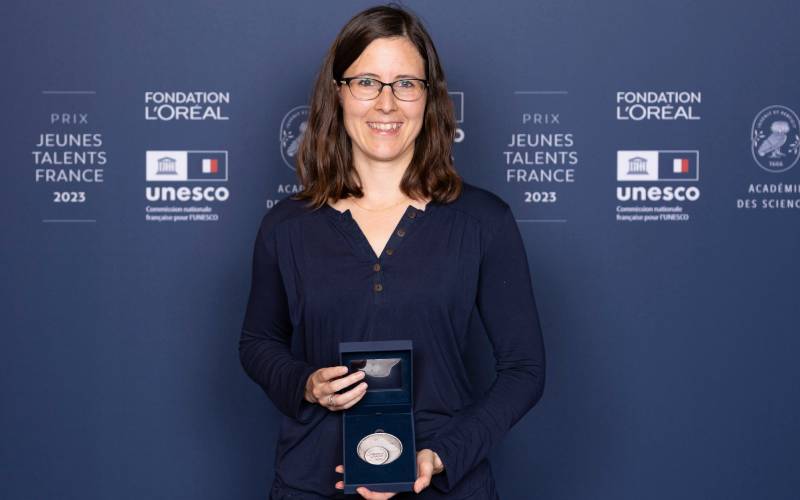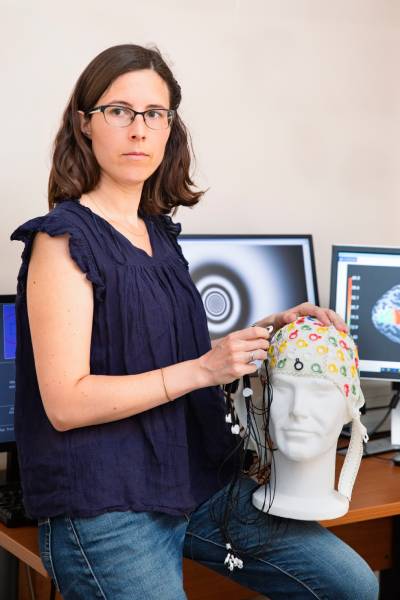
She is especially interested in the movement of brain oscillations, a signal involved in all aspects of cognition: memory, perception of time, attention paid to things etc. “The traditional approach is to study fluctuations in brain activity over time in a given area of the brain, and to link them to various cognitive functions,” explains Laetitia Grabot. But, we realised that in reality this activity spreads, a bit like a wave on the surface of the water. To observe this movement, high spatial resolution is needed, which is only possible in patients equipped with electrodes implanted in their brain, so that greatly limits research possibilities!” Laetitia Grabot’s work is original in that it develops a mathematical model for simulating this propagation in a completely non-invasive way.
 The visual cortex as a case study
The visual cortex as a case study
To do so, she uses electroencephalographic data, since the electroencephalogram (EEG) records activity using electrodes simply placed on the head, and links the EEG data to the propagation of brain oscillations. To begin with, she is using a simple case, that of the visual cortex, which is unique in that it behaves in a linear way, making it easy to map the brain activity by matching the visual field to the location of the neurons activated in the visual area. “If I present a flash of light in the upper right of an individual’s visual field, I know exactly where the neurons will be located in response. This is referred to as the retinotopic property of the primary visual area.” In concrete terms, she creates waves in a volunteer's visual cortex by sending flashes at a certain frequency, and uses EEG data sets obtained to create her model. This model, which should be published within a year, can already detect the presence of a “wave” of activity and its direction of propagation in the brain.
The results of this research should ultimately provide an additional tool for the scientific community and help improve our understanding of how the brain works overall. In the longer term, it could, for example, contribute to a better understanding of attention disorders such as hyperactivity. It could also help improve the performance of brain-machine interfaces, like those of patients equipped with mind-controlled prosthetics.
The young researcher will use the €20,000 grant awarded by the l’Oréal-Unesco foundation to make a film about her work for a lay audience.
Crédits photos :
- Fondation L'Oréal
- Clémence Losfeld



